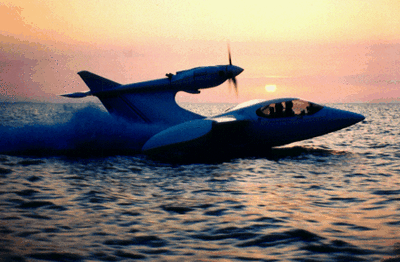Two People Killed When Aircraft Failed To Clear Trees
Its hard to determine, for sure, whether there were sufficient clues... but if your first takeoff, after engine maintenance is not going well, it behooves one to close the throttle brake to a stop and take it back to the barn for a hard look-see by qualified pro's before attempting further flight. What a shame...

NTSB Identification: ERA13FA109
14 CFR Part 91: General Aviation
Accident occurred Saturday, January 12, 2013 in Sarasota, FL
Aircraft: BENTON FRED D SEAWIND 3000, registration: N829GS
Injuries: 2 Fatal.
This is preliminary information, subject to change, and may contain errors. Any errors in this report will be corrected when the final report has been completed. NTSB investigators either traveled in support of this investigation or conducted a significant amount of investigative work without any travel, and used data obtained from various sources to prepare this aircraft accident report.
On January 12, 2013, about 1529 eastern standard time, a Benton Seawind 3000, N829GS, was destroyed following a collision with trees and terrain after takeoff from Sarasota/Bradenton International Airport (SRQ), Sarasota, Florida. The commercial pilot and one pilot-rated passenger were fatally injured. The airplane was registered to a corporation and was operated by the pilot under the provisions of 14 Code of Federal Regulations Part 91 as a personal flight. Visual meteorological conditions prevailed and no flight plan was filed. The local flight was originating at the time of the accident.
A witness was in his automobile on 15th Street, on the east side of SRQ, and watched the airplane takeoff on runway 22. He reported that the takeoff roll seemed longer than normal, and the airplane climbed slowly. As the airplane approached trees located past the runway, it “pancaked” into the trees without rolling right or left. He then saw a plume of smoke and realized the airplane had crashed.

The airplane struck three tall pine trees on the campus of New College of Florida before impacting terrain and coming to a stop. The airplane was consumed in a post-crash fire. The main wreckage was located about 0.3 nautical miles beyond the departure end of runway 22. The length of the wreckage debris field was about 300 feet in length and oriented on a heading of 240 degrees. The fuselage was found inverted.
According to air traffic control personnel, the pilot departed the airport under visual flight rules and did not make a distress call before the accident.
According to local maintenance personnel, the airplane had been at SRQ since September, 2012. The accident pilot was involved in an emergency landing in the accident airplane; he landed in the Indian River Lagoon, near Sebastian Inlet, Florida, following a loss of engine power. According to the aircraft records, a fuel injector line was subsequently replaced because of a broken fitting. Also, the propeller and propeller governor were overhauled during maintenance unrelated to the engine problem. Reportedly, this was the first flight for the airplane since the maintenance work was completed.
 ANN's Daily Aero-Linx (05.02.24)
ANN's Daily Aero-Linx (05.02.24) ANN's Daily Aero-Term (05.02.24): Touchdown Zone Lighting
ANN's Daily Aero-Term (05.02.24): Touchdown Zone Lighting Aero-News: Quote of the Day (05.02.24)
Aero-News: Quote of the Day (05.02.24) ANN FAQ: Contributing To Aero-TV
ANN FAQ: Contributing To Aero-TV NTSB Final Report: Cirrus Design Corp SR20
NTSB Final Report: Cirrus Design Corp SR20




